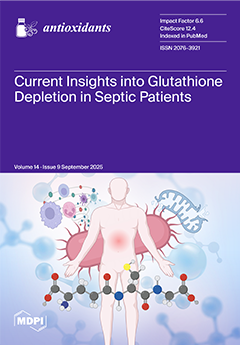Oxygenic and anoxygenic photosynthesis have long been considered defining traits of cyanobacteria. However, whether the important cyanobacterial genus
Synechococcus is capable of anoxygenic photosynthesis remains unconfirmed. Here, we report that
Synechococcus sp. PCC 7002 is capable of anoxygenic photosynthesis when sulfide (H
2
[...] Read more.
Oxygenic and anoxygenic photosynthesis have long been considered defining traits of cyanobacteria. However, whether the important cyanobacterial genus
Synechococcus is capable of anoxygenic photosynthesis remains unconfirmed. Here, we report that
Synechococcus sp. PCC 7002 is capable of anoxygenic photosynthesis when sulfide (H
2S) is supplied as the sole electron donor. Combining the targeted deletion of the sulfide: quinone oxidoreductase gene (Δ
sqr) with 3-(3,4-dichlorophenyl)-1,1-dimethylurea (DCMU) mediated the inhibition of photosystem II. We demonstrated that SQR-mediated H
2S oxidation sustains light-dependent CO
2 fixation in the absence of O
2 evolution. Our genome-wide transcriptomic profiling further revealed that polysulfide (H
2S
n) and hydrogen peroxide (H
2O
2) function as distinct signaling molecules in oxygenic and anoxygenic photosynthesis, modulating central carbon and energy metabolism. In central carbon metabolism, H
2S
n markedly upregulates the expression of key genes, including
psbA,
petC,
rbcL, and
rbcS, whereas H
2O
2 downregulates these genes. Within energy metabolism, both molecules converge on oxidative phosphorylation by upregulating genes encoding NADH dehydrogenase and ATP synthase. Furthermore, H
2Sₙ treatment uniquely induces sulfur-assimilation and ROS-detoxifying enzymes, conferring a markedly higher tolerance than H
2O
2. These findings provide direct evidence of anoxygenic photosynthesis in the genus
Synechococcus and uncover a dual regulatory network that allows
Synechococcus sp. PCC 7002 to balance redox homeostasis under fluctuating oxic/anoxic conditions.
Full article






